Introduction
Land administration in the oil and gas industry is a multifaceted process integral to the success of energy projects, encompassing land acquisition, lease management, and regulatory compliance. Effective land administration hinges on meticulous documentation, precise mapping, and ongoing stakeholder communication. Technological advancements, such as 3D seismic imaging and advanced drilling techniques, play a vital role in enhancing exploration success rates and addressing modern challenges, including regulatory compliance and stakeholder engagement.
Additionally, the proper management of lease records and mineral rights is fundamental to operational efficiency and legal adherence, ensuring the seamless execution of projects and safeguarding the interests of all parties involved.
The article explores the pivotal role of land service professionals who navigate intricate legal frameworks and negotiate land leases, acting as intermediaries between energy companies and landowners. It also delves into the importance of mediation and collaboration in resolving disputes and fostering community relations, highlighting successful initiatives like the LAND-at-scale program. Moreover, the discussion extends to strategies for mitigating risks through proactive planning and due diligence, emphasizing best practices in environmental assessments and regulatory compliance.
As the energy and land services sector undergoes significant transformation driven by technological innovations and evolving regulatory frameworks, the article underscores the importance of leveraging advancements such as AI-assisted research tools and enhanced GIS mapping. The future of land services will be shaped by these technologies, predictive analytics, and smart grids, all of which are critical for sustainable energy management and navigating the complexities of modern land administration.
Key Components of Land Administration
'Property administration in the oil and gas sector is a multifaceted process that includes property acquisition, lease management, and regulatory compliance.'. These critical components ensure the smooth progression of power projects without legal hurdles. Effective territory administration demands meticulous documentation, precise mapping, and consistent communication with stakeholders. For instance, the Oil and Gas Department highlights the importance of electronic filing to streamline applications and forms, which saves time and enhances efficiency. The Bureau of Land Management (BLM) also emphasizes public input and collaboration with various stakeholders to make informed decisions that protect the environment and public safety. In this evolving landscape, modern technology, such as 3D seismic imaging and advanced drilling techniques, plays a pivotal role in improving exploration success rates. Furthermore, the need for technological and legal innovation is underscored by the ongoing global energy crisis, necessitating robust strategies to address challenges like regulatory compliance and stakeholder engagement.
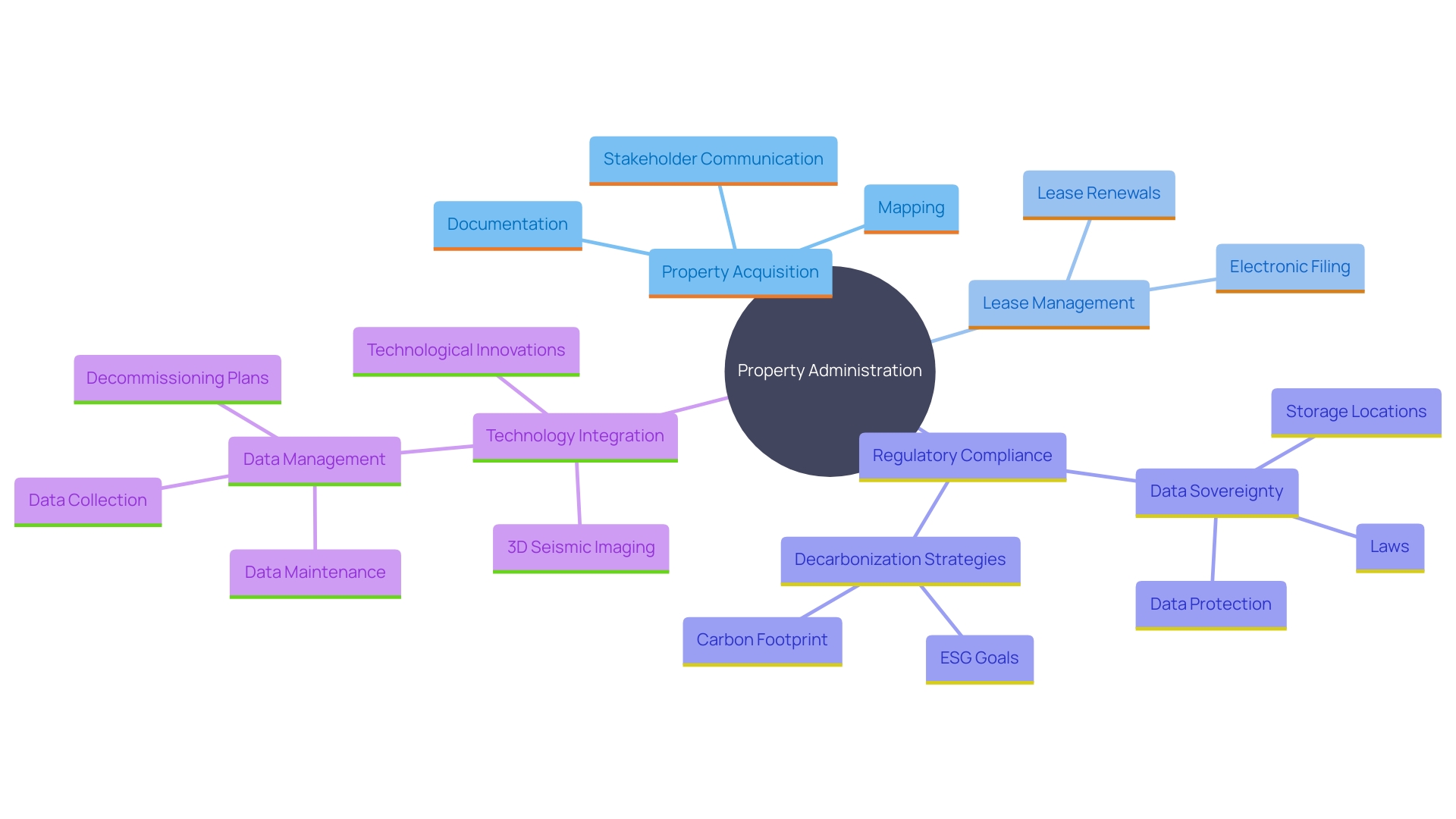
Lease Records: Foundation of Drilling and Exploration Projects
Lease records are fundamental to drilling and exploration activities within the oil and gas industry. These records carefully outline the conditions of property use, the privileges granted, and the duties of the involved parties. Accurate and up-to-date lease records are indispensable for maintaining regulatory compliance and preventing disputes among stakeholders. For instance, a recent legal challenge highlighted the importance of adhering to lease terms. In the case of State of Louisiana v. Haaland, nearly 6 million acres were controversially removed from Lease Sale 261, emphasizing the critical role of precise lease records in upholding legal and procedural standards.
Furthermore, these records are pivotal in assessing the financial viability of exploration projects. The offshore oil and gas industry, which has installed over 55,000 wells and 7,000 platforms since the 1940s, relies heavily on detailed lease documentation to manage the decommissioning of infrastructure safely and cost-effectively. Delayed decommissioning can lead to increased environmental, safety, and financial risks, making comprehensive lease records even more crucial.
In conclusion, lease records not only facilitate operational efficiency but also ensure that all legal, environmental, and financial obligations are met, thereby safeguarding the interests of all parties involved.
The Importance of Mineral Rights in Energy Projects
Comprehending mineral entitlements is essential in the oil and gas sector. These entitlements dictate who has the authority to extract resources from the land and are often separate from surface privileges. In Texas, ownership of minerals has been a cornerstone for over 150 years, with legal records dating back to the 1866 state constitution. This historical framework ensures mineral owners can track and manage their entitlements effectively.
Effective oversight of mineral entitlements is essential for energy firms to function lawfully and efficiently. It includes entering into contracts, such as mineral lease agreements, where specialized companies are permitted to explore and extract resources. This process not only legally safeguards operations but also maximizes resource extraction while minimizing potential conflicts with landowners.
The difference between mineral estates and surface estates highlights the complexity of these entitlements. Mineral holdings frequently have dominance over surface properties, permitting mineral owners to use the surface for resource extraction. This legal structure is essential for maintaining operational efficiency and minimizing disputes.
As the demand for transition minerals, such as lithium and cobalt, increases due to the energy transition, the importance of managing mineral rights effectively will become even more pronounced. Comprehensive data and advanced techniques like remote sensing and artificial intelligence are critical for addressing the underestimation of mining impacts and ensuring sustainable development. As noted in recent studies, “We can't manage what we can't measure,” highlighting the need for transparency and data-driven approaches in the mining sector.
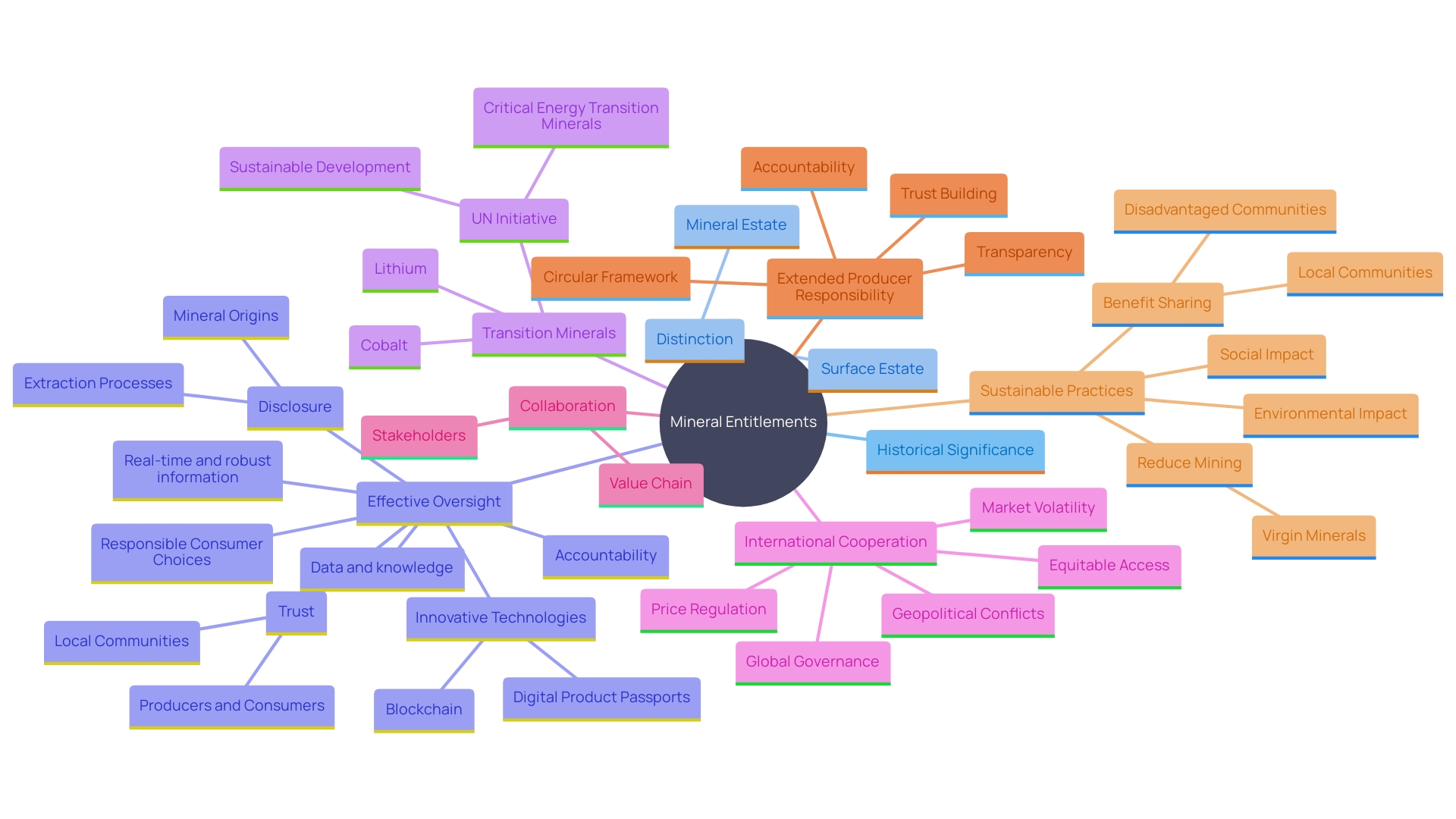
Challenges and Opportunities in Land Administration
The oil and gas sector navigates significant complexities in property administration, notably regulatory hurdles, property owner negotiations, and environmental concerns. Nonetheless, these challenges offer avenues for innovation and enhancement. Advanced technologies, such as Geographic Information Systems (GIS) and remote sensing, can streamline property acquisition processes, providing accurate data and reducing time.
Collaboration between private sectors, government agencies, and local communities is pivotal. Initiatives such as the LAND-at-scale program showcase the effectiveness of participatory property registration programs in tackling tenure issues, thereby facilitating infrastructure development. This cooperative approach ensures the participation of local communities, fostering a sense of ownership and reducing conflicts.
Furthermore, the integration of multidisciplinary approaches, as highlighted in the Operators’ Forum, showcases how geology, geophysics, and engineering can collectively improve asset value and operational efficiency. Case studies from the forum underline the importance of team presentations, where operators lead but incorporate non-operators, ensuring a holistic evaluation of datasets.
Statistics show that uncertainty regarding environmental regulations and property claims is a significant obstacle for investors, especially in Canadian provinces. On average, 68 percent of respondents were deterred by environmental regulation uncertainties in Canada, compared to 41 percent in the United States. This highlights the necessity for clear and consistent regulatory frameworks to attract investment and facilitate smooth property acquisition processes.
By implementing these strategies, the oil and gas sector can not only address current obstacles but also promote sustainable growth and enhance operational efficiency.
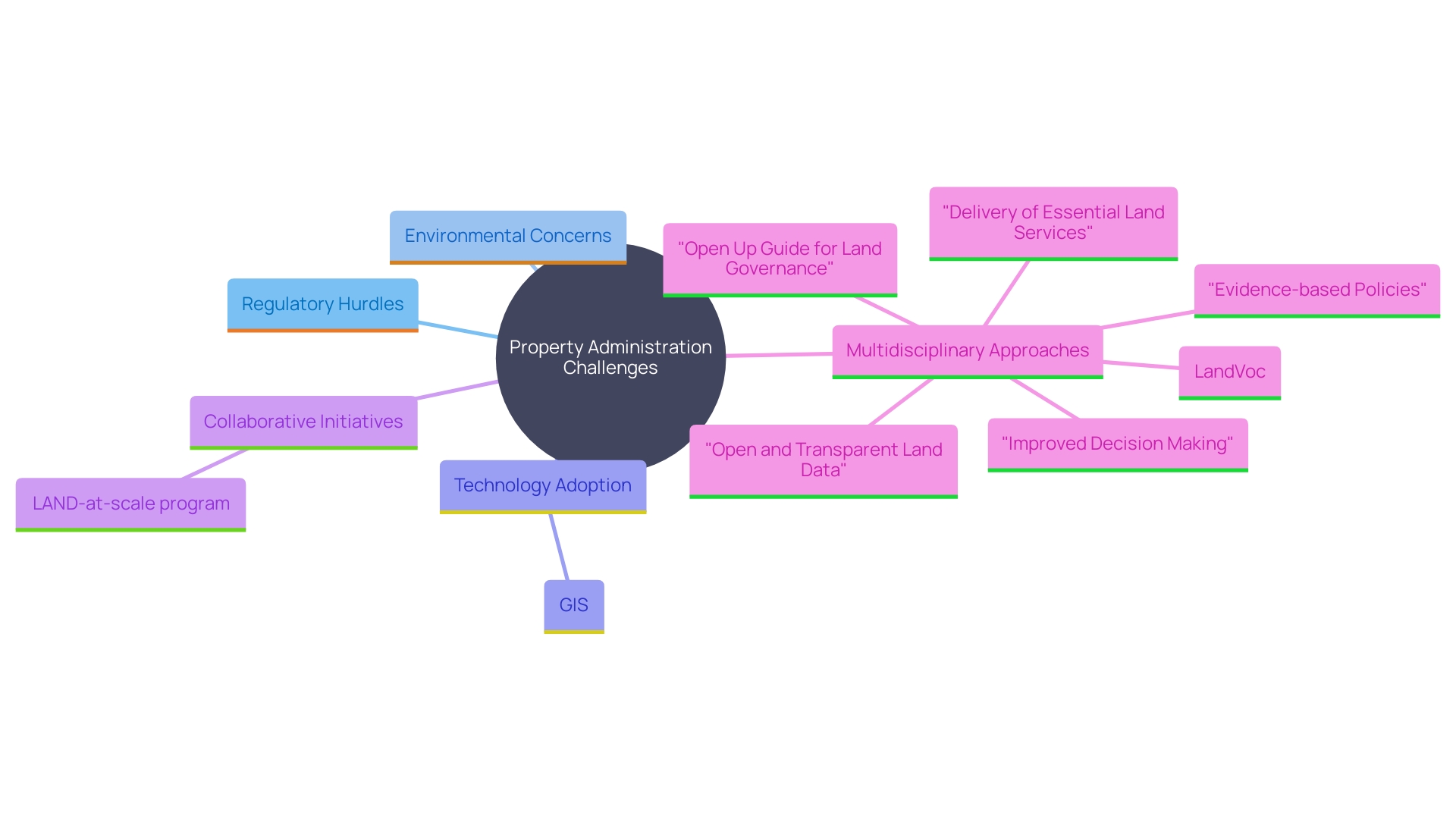
Role of Land Service Professionals in Energy Development
Land service professionals play a pivotal role in the oil and gas industry. Their extensive knowledge in navigating intricate legal frameworks and negotiating property leases is critical for the seamless acquisition of property. Through meticulous title research, they mitigate risks, ensuring that companies secure the necessary land while managing potential legal and logistical challenges. Acting as intermediaries between power companies and landowners, these professionals foster collaboration and understanding, essential for the successful execution of projects. This strategic approach not only supports the development of power infrastructure but also aids in addressing broader geopolitical and environmental considerations, such as those highlighted in recent sector analysis. For instance, the integration of non-energy factors like climate risks and ecosystem impacts into the selection of new infrastructure sites is becoming increasingly vital. Furthermore, the function of area specialists includes executing strategies that improve the resilience of nearby communities, thus aiding in sustainable development objectives. Their expertise ensures that power projects not only meet regulatory requirements but also align with the long-term sustainability objectives of the industry.
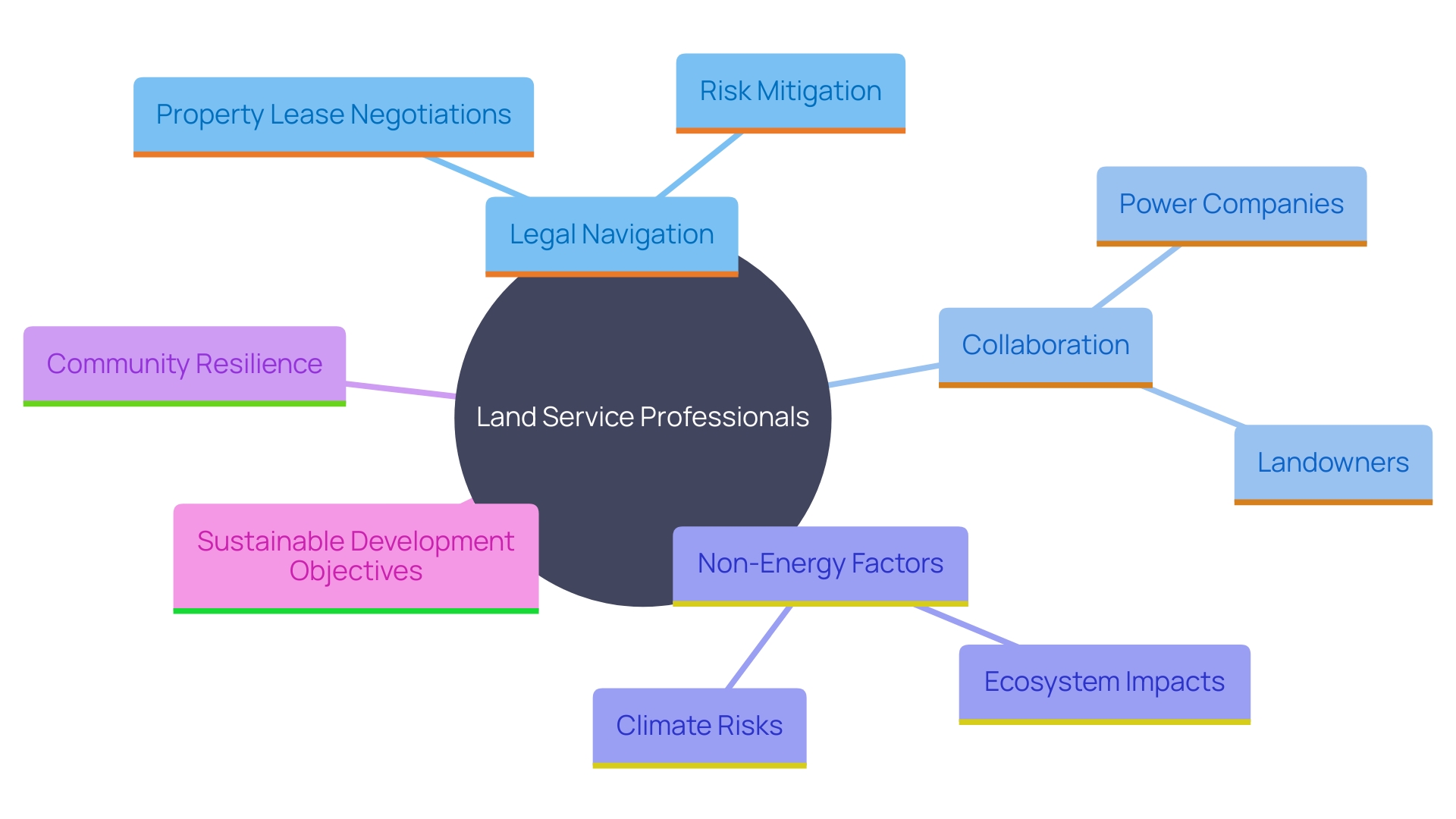
Effective Mediation and Collaboration in Land Services
Negotiation and teamwork are crucial in property management, particularly when addressing disputes between utility firms and property owners. Skilled service professionals facilitate open dialogue and help negotiate fair agreements that respect the interests of all parties involved. This approach not only resolves disputes but also builds trust and improves community relations, which is vital for the long-term success of energy projects.
The LAND-at-scale programme, for example, emphasizes fair and just tenure security and access to property, aiming to reduce conflicts and competing claims over territory. This programme's success in integrating climate change into territory governance highlights the importance of collaborative efforts in property services. The California Department of Fish and Wildlife's recent reintroduction of beavers into the wild, in partnership with the Maidu Summit Consortium, is another example of how collaborative efforts can lead to successful outcomes in resource management.
Moreover, the Strategic Growth Council's 2024 Catalyst Conference underscores the significance of collaboration among frontline leaders, researchers, funders, and government partners in promoting community projects. These initiatives demonstrate how collective efforts can lead to sustainable and efficient use of resources, ultimately contributing to the successful negotiation and implementation of energy projects.
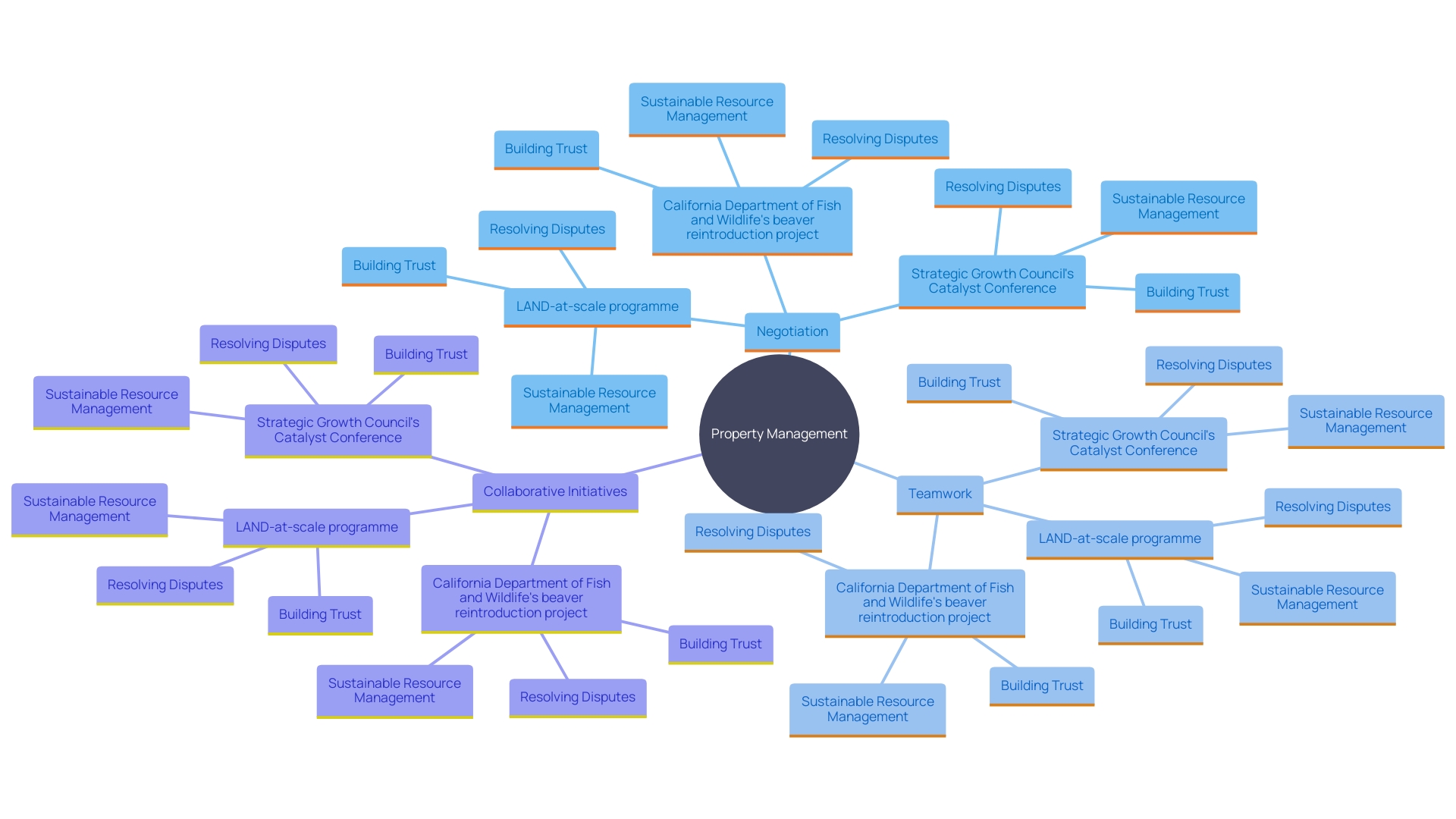
Mitigating Risks and Boosting Project Success
Reducing risks in real estate operations requires proactive planning and comprehensive due diligence. 'Conducting comprehensive title searches and understanding local regulations are foundational strategies that enable service teams to identify and address potential issues before they escalate.'. For instance, a study on floodplain development in North Carolina revealed significant challenges, such as over 75,000 acres of vacant floodplain area zoned for development, highlighting the importance of preemptive measures. This foresight is crucial for making informed decisions that enhance project success rates and minimize delays.
In addition, applying best practices in environmental due diligence—including Phase I and Phase II environmental site assessments—ensures that risks and liabilities are properly identified and quantified. This approach not only mitigates economic and reputational risks but also aligns with regulatory requirements. A recent survey indicated that uncertainty concerning environmental regulations deterred 68% of investors in Canadian provinces, emphasizing the necessity for thorough due diligence in property acquisitions.
Relying on proven techniques to reduce risk and mitigate disaster impacts is another essential facet. For example, Texas coastal communities have employed various regulatory and educational tools to protect against natural disasters, yet these tools are not fully utilized across the state. Learning from these practices can offer valuable lessons for other regions.
By integrating these strategies, ground support teams can navigate complex legal environments and stakeholder negotiations more effectively. This comprehensive risk management approach ultimately contributes to smoother project execution and greater resilience against unforeseen challenges.
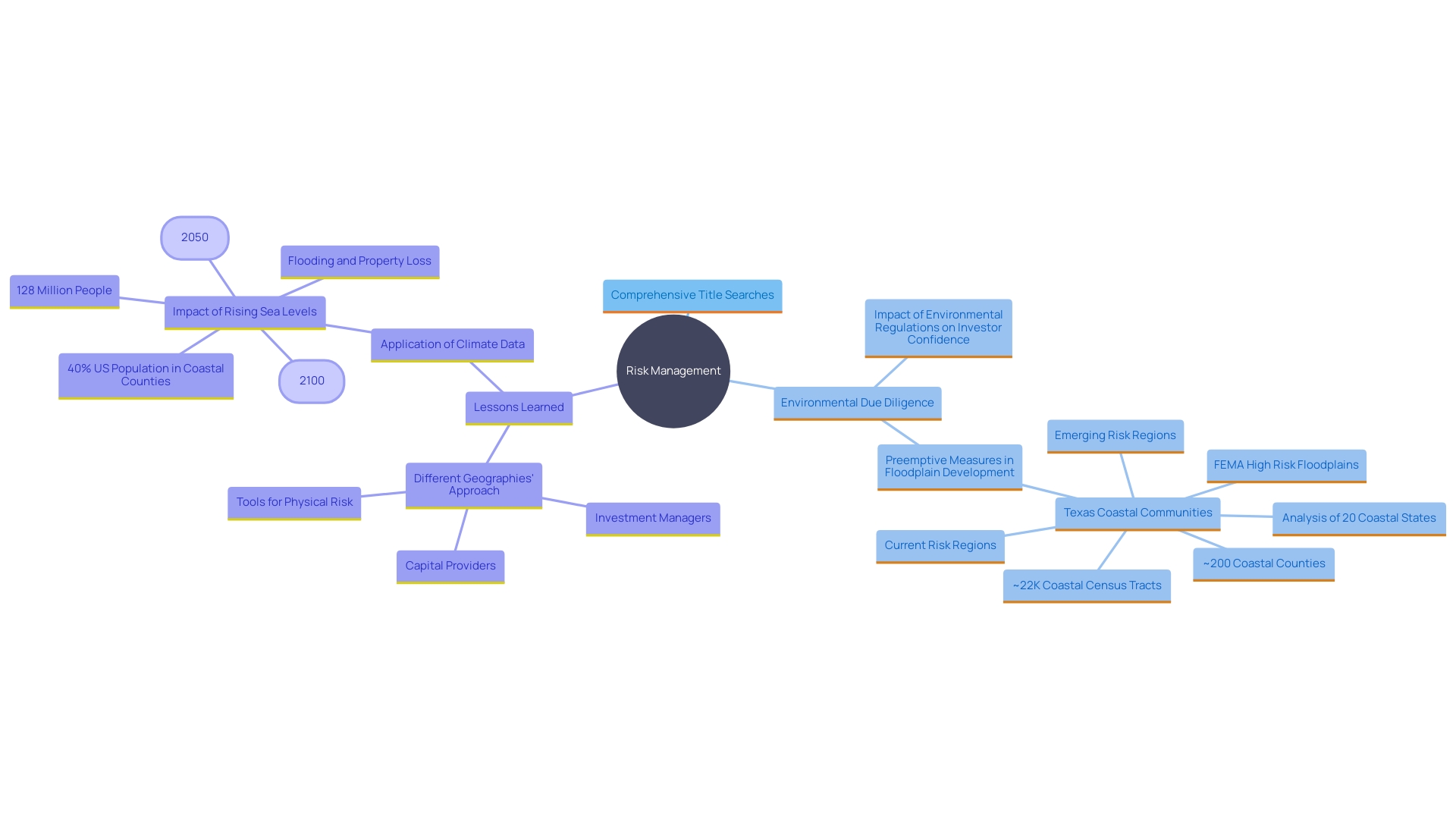
The Future of Energy and Land Services
'The energy and property sector is experiencing a major change, driven by technological advancements and changing regulatory frameworks.'. As the industry increasingly focuses on sustainability, professionals in property services must navigate new challenges and seize emerging opportunities. Leveraging advancements such as AI-assisted research tools and enhanced GIS mapping is vital for achieving efficiency and precision in land management.
AI and machine learning have become pivotal in addressing environmental and climate issues, from disaster response to biodiversity monitoring. However, the adoption of these technologies also demands careful consideration of their environmental impacts. A comprehensive study highlighted the dual nature of AI, showcasing both its potential sustainability benefits and the pressures it places on natural resources. For instance, AI can enhance power management, a key theme identified in the study, by optimizing resource use and reducing emissions.
Recent initiatives, such as the World Bank's $50 million regional platform in Eastern and Southern Africa, aim to bridge technical knowledge gaps and expedite clean power projects. These efforts are crucial for integrating AI and other technologies into sustainable practices. Moreover, the Council for Inclusive Capitalism's new resource library supports business practices that align with the UN Sustainable Development Goals, emphasizing the need for ethical deployment and international collaboration in AI applications.
'The landscape of property services is also shaped by predictive analytics and smart grids, which are critical for sustainable energy management.'. Insights from industry experts underscore the transformative power of AI in landscape architecture, highlighting its role in enhancing efficiency and resilience. As the sector continues to evolve, embracing holistic approaches and innovative technologies will be essential for navigating the complexities of modern land management.
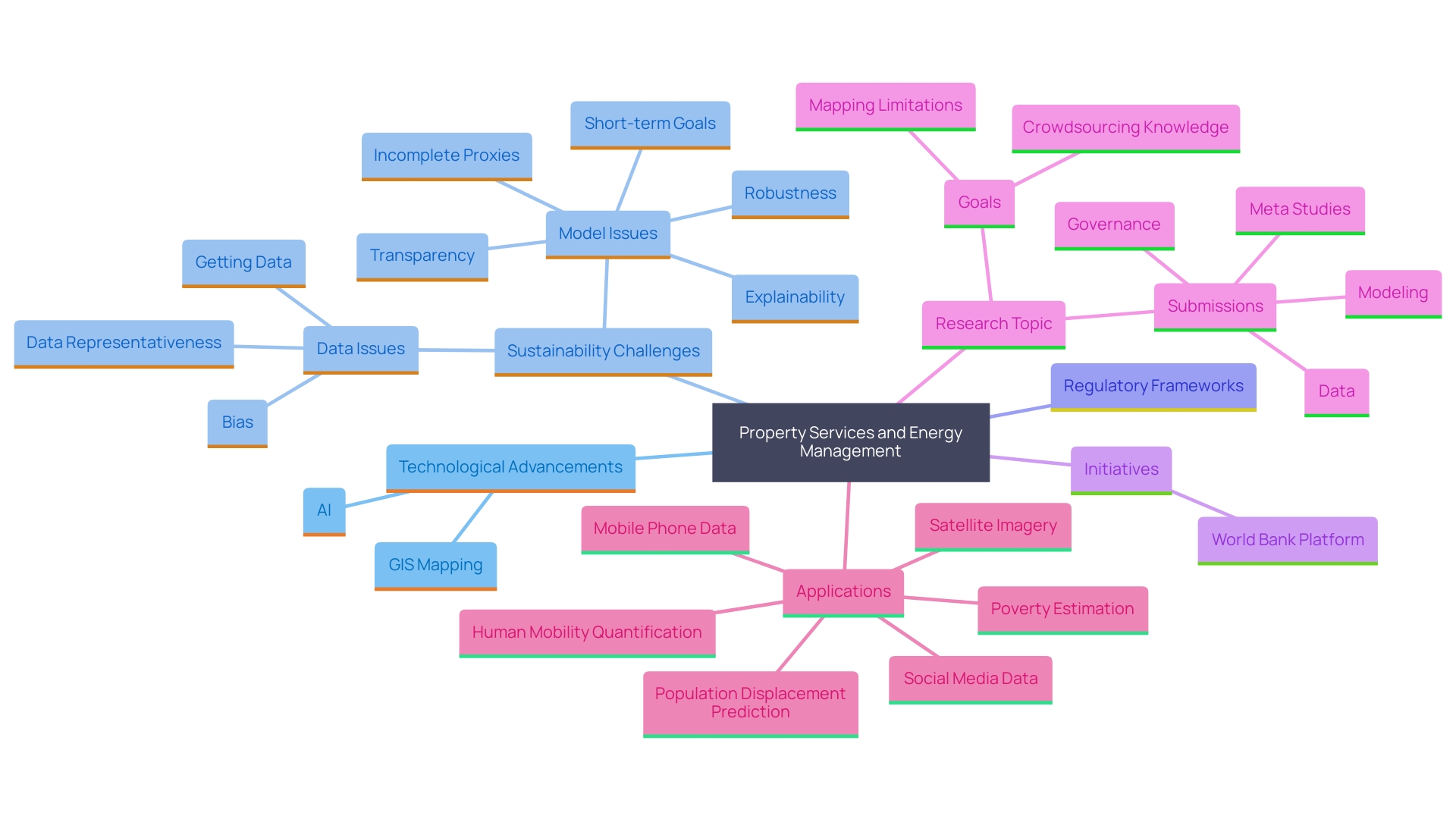
Conclusion
Land administration in the oil and gas industry is crucial for the success of energy projects, focusing on land acquisition, lease management, and regulatory compliance. Advanced technologies like GIS mapping and 3D seismic imaging enhance operational efficiency and address regulatory challenges.
Accurate lease records are vital for detailing land use rights and responsibilities, ensuring compliance, and preventing disputes. Effective management of mineral rights is equally important, as it governs resource extraction and requires careful contractual agreements to minimize conflicts with landowners.
Despite challenges such as regulatory hurdles and environmental concerns, opportunities for innovation exist. Collaborative efforts among private sectors, government agencies, and local communities are essential, exemplified by initiatives like the LAND-at-scale program.
Land service professionals are key in navigating legal frameworks and facilitating cooperation between energy companies and landowners. Their expertise in mediation and risk mitigation ensures compliance with regulatory standards while promoting sustainability.
Looking ahead, the future of energy and land services will be shaped by technological advancements and a commitment to sustainable practices. Embracing innovations such as AI-assisted tools and predictive analytics will be vital for enhancing efficiency in land management and successfully navigating the complexities of modern land administration.




